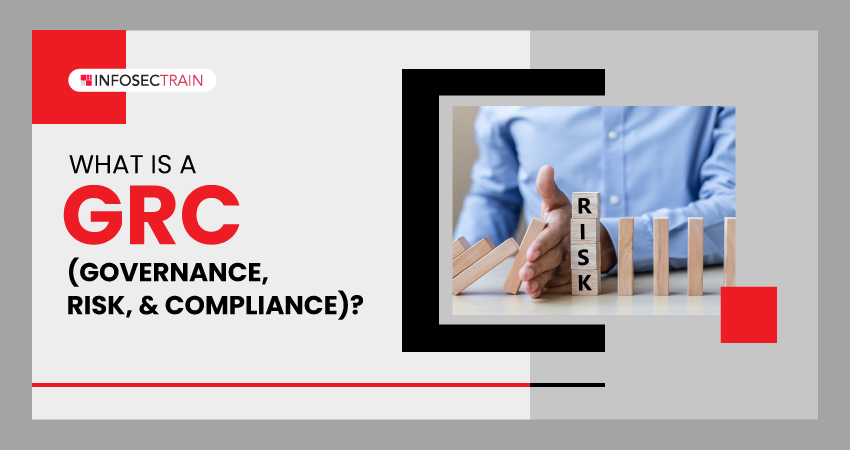What is GRC (Governance, Risk, and Compliance)?
In today’s complex business environment, it is essential for organizations to establish robust processes to manage their Governance, Risk, and Compliance (GRC) obligations. The term GRC is widely used to describe a framework that enables companies to align their strategies, objectives, and operations with regulatory requirements and industry best practices. GRC encompasses a wide range of activities, including risk management, regulatory compliance, corporate governance, and information security management. This article will dive into what GRC is, why it is important, and how it can help organizations manage their risks and compliance obligations more effectively.

Table of Contents
What is GRC?
Why is GRC important?
Components of GRC
How does GRC work?
Challenges of GRC implementation
What is GRC?
GRC stands for Governance, Risk, and Compliance. It is a framework that organizations use to manage risk, comply with regulations, and govern their operations effectively.
Why is GRC important?
GRC (Governance, Risk, and Compliance) is essential as it empowers organizations with a framework to manage risks, ensure compliance with regulations, and strengthen governance practices. It enables organizations to identify potential risks, implement controls to mitigate those risks and ensure compliance with legal and regulatory requirements. Effective GRC practices can help organizations to build trust with stakeholders, enhance reputation, and improve overall business performance. Additionally, as the regulatory landscape becomes more complex, GRC becomes increasingly important to ensure organizations can navigate the evolving business environment effectively.
Components of GRC:
The components of GRC (Governance, Risk, and Compliance) are:
- Governance: Governance refers to the processes and structures that are put in place to manage and oversee the organization’s operations. This includes defining the organization’s goals, objectives, and strategies, and establishing the policies and procedures to ensure that they are achieved. Effective governance helps ensure that the organization is operating in an ethical and responsible manner.
- Risk Management: Risk management involves identifying potential risks to the organization and implementing controls to mitigate those risks. This includes evaluating the possibility and impact of risks, developing risk response plans, and monitoring and reporting on risk exposure. Effective risk management helps organizations reduce the likelihood of negative outcomes and protect against financial, legal, and reputational damage.
- Compliance: Compliance refers to ensuring that the organization is complying with applicable laws, regulations, and standards. This includes monitoring regulatory requirements, ensuring policies as well as procedures are in place to meet those requirements, and conducting regular compliance audits. Effective compliance helps organizations avoid legal and regulatory penalties, reputational damage, and other negative consequences.
How does GRC work?
GRC creates a framework that integrates governance, risk management, and compliance activities within an organization. It begins with defining the organization’s goals, objectives, and strategies, and establishing policies and procedures to ensure they are achieved. The risk management component involves identifying potential risks, assessing their likelihood and impact, and implementing controls to mitigate those risks. Compliance ensures that the organization is complying with applicable laws, regulations, and standards. Effective GRC requires collaboration between different functions within an organization and the use of technology to automate processes, improve data quality, and provide real-time monitoring capabilities. GRC helps organizations operate ethically, mitigate risks, and ensure compliance for long-term success.
Challenges of GRC implementation:
Some of the common challenges of implementing GRC within an organization include:
- Complexity: GRC implementation can be complex and time-consuming, especially for large and diverse organizations with multiple business units, geographies, and regulatory environments.
- Siloed approaches: Departments within an organization may have different priorities, mandates, and objectives, leading to siloed approaches and conflicts that can hinder effective GRC implementation.
- Lack of resources: Implementing effective GRC practices necessitates considerable investment in terms of both finance and human resources. Many organizations struggle to allocate sufficient resources for GRC activities, leading to incomplete or inadequate implementation.
- Resistance to change: Implementing GRC necessitates modifying existing processes and systems, which can encounter resistance from stakeholders who are hesitant to embrace new methods of operation.
- Limited technology capabilities: GRC implementation requires advanced technology capabilities, such as data analytics, risk modeling, and reporting. Many organizations lack the necessary technology infrastructure and expertise to implement GRC effectively.
- Lack of integration: GRC activities are often fragmented across different functions and systems, leading to gaps and inefficiencies in the overall GRC process.
Effective GRC implementation requires a strategic and coordinated approach that addresses these challenges and leverages technology, people, and processes to achieve desired outcomes.
Final words:
GRC is a critical framework for organizations to manage and mitigate risks while ensuring compliance with regulatory requirements. By implementing effective GRC practices, organizations can strengthen their governance structure, reduce potential risks, and meet regulatory requirements more efficiently. The GRC framework allows organizations to have a clear understanding of the risks associated with their business activities and enables them to implement appropriate controls to mitigate those risks. Additionally, effective GRC practices can help organizations enhance their reputation, build trust with stakeholders, and improve overall business performance. As businesses face increasingly complex challenges in the ever-changing regulatory environment, GRC becomes even more essential to ensure long-term success and sustainability. Ultimately, a robust GRC framework can provide organizations with the agility and resilience needed to navigate the evolving business landscape while effectively managing risks and maintaining compliance.
TRAINING CALENDAR of Upcoming Batches For RSA Archer
| Start Date | End Date | Start - End Time | Batch Type | Training Mode | Batch Status | |
|---|---|---|---|---|---|---|
| 03-Aug-2025 | 06-Sep-2025 | 19:00 - 22:00 IST | Weekend | Online | [ Open ] |







 1800-843-7890 (India)
1800-843-7890 (India)